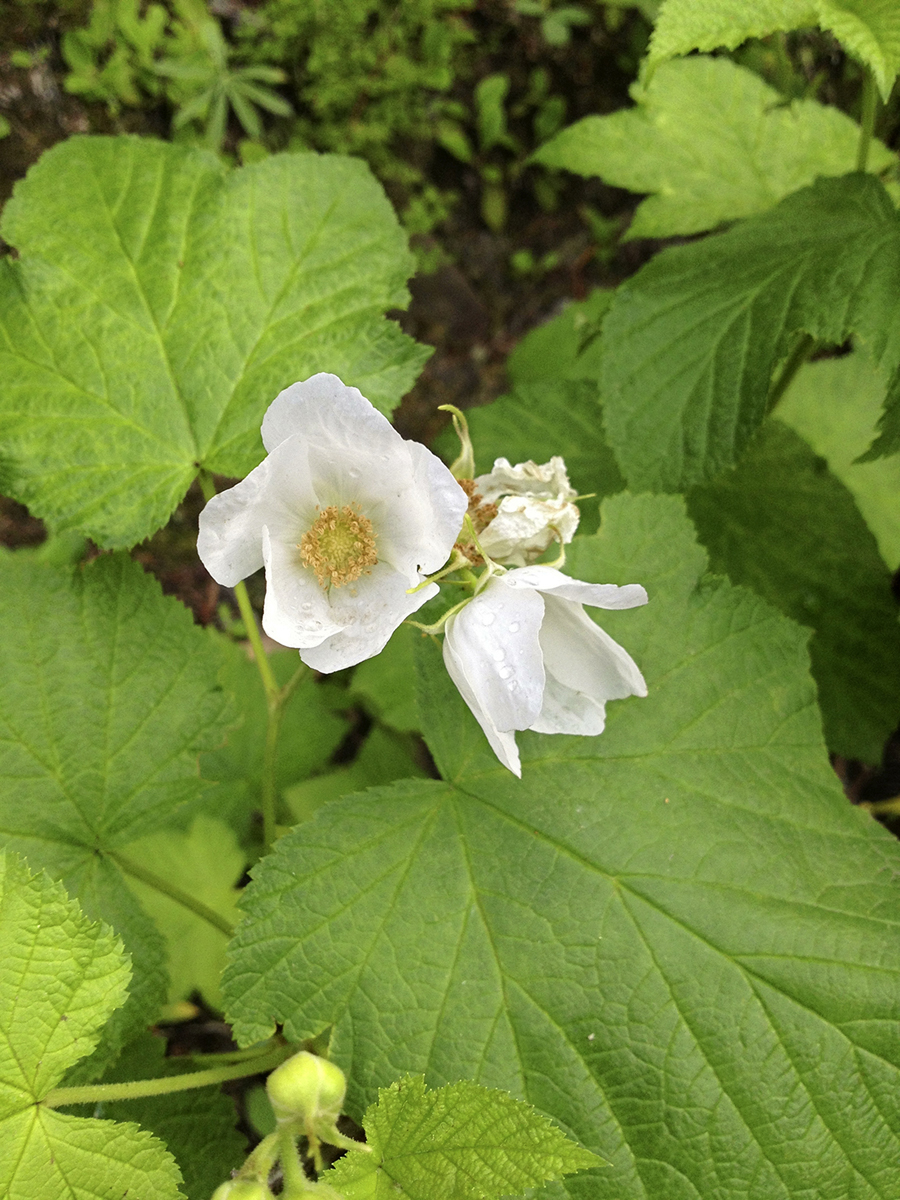
Flowers of the thimbleberry in early summer.
Rubus parviflorus
EDIBLE berries
Thimbleberry’s soft, red, tart fruit makes a perfect snack along the trail, and if any berries make it back to the ranch, they can be converted into the coveted thimbleberry jam, fruit leather, and pie.
The thimbleberry bush has glandular hairs instead of thorns and grows to 6 feet tall. Its simple, maple-like leaves have palmate venation, with five lobes, and are sharply toothed. The leaves alternate along the cane. Thimbleberry has white flowers in late spring that develop into soft red fruit that is up to ¾ inch across in late summer. The fruit grows in clusters and is seedy, tart, and soft; it resembles a wide raspberry with smaller, drier-looking carpels.

Flowers of the thimbleberry in early summer.
Thimbleberry is a delicious, quintessential fruit of the northern Midwest found in many a homemade jam or pie.
Thimbleberry likes to grow along the trail, in part sun, at the edges of woods and open fields. Its fruits ripen in late July into early August.
The fruits are soft and do not travel well. Gather them into shallow baskets so as to not crush them. Process immediately in the kitchen or freeze for later use.
Like its cousins the raspberry and blackberry, thimbleberry makes for delicious crumbles, pies, and muffins. The fruits also make a delicious jam and fruit leather, but because the fruit is especially seedy, run it through a food mill or strainer first. For beverages, you can ferment the thimbleberry into wine or macerate crushed thimbleberries with raw apple cider vinegar to create a refreshing and nutritious vinegar shrub. A simple thimbleberry syrup can flavor mixed drinks, champagnes, and refreshing homemade sodas.
Thimbleberry propagates easily in open wooded areas and along disturbed edges of woods, and it transplants well. The plants are a good addition to a permaculture landscape plan. Harvesting the fruits will have little impact on future harvests.